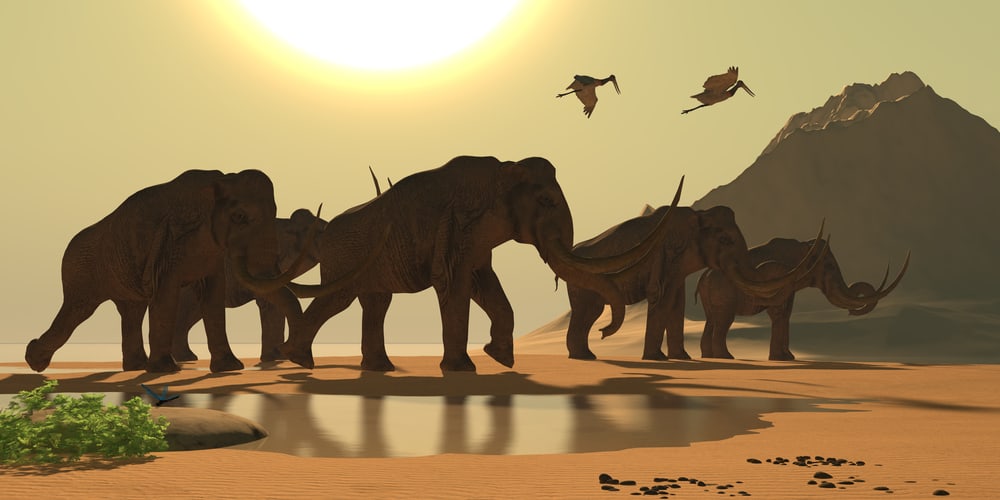Close your eyes.
Imagine lush, grassy plains dotted with playas rolling to distant blue mountains west and south. Other than a few crusty black lava flows, the only interruption is a reddish cone-shaped mountain, its rocky sides coated with yellow-green lichen. It’s cold, even though it’s early summer, the skies covered in heavy clouds scudding eastward over a range of jagged peaks just visible on the horizon.

A bugle sounds, a trumpeting that starts as a low rumble and shudders through your chest before it rises and echoes. It originates from a herd of huge lumpish-brown animals—you mistake them for elephants at first—wallowing in the shallow pools of muddy water that surround the small mountain. Young ones, the size of horses, are playing and splashing, while adults graze on the thick grasses and sedges that cover the ground.

But these animals are different. Their foreheads are domed, ears small. Their tusks are long and curved, and their bodies are covered in hair—shaggy, and now, caked in mud. Not elephants, but Mammuthus columbi—Columbian mammoths—Pleistocene megafauna that went extinct around ten thousand years ago. The mammoths you see in your imagination live in the southwestern plains of what will one day become New Mexico.

Led by the matriarch, animals from the herd are wandering to a smaller jumble of rocks behind the cone-shaped mountain. Muddy grit coats their bodies, and they scratch themselves along shoulder-high rocks, sluffing off insects and parasites and the final patches of a heavy winter fur. There is even a table rock one animal is standing over to rub her belly and ‘elbows’. And over the ages, the sharp edges of the rubbing rocks become so smooth, they gleam in the sun. https://www.youtube.com/watch?v=X43Pr0htq9s


If you want to actually visit and touch the rubbing rocks, you can. They are southeast of the Akela Flats (exit 102) off of I-10 in southern New Mexico. Take a robust vehicle because of the rough dirt roads, and go during the winter because the cone-shaped mountain has a nick-name: Rattlesnake Peak. Bring water, your camera, and your imagination, and picture those amazing animals. If I had a time machine, I would go back and see them in real life. How about you?




What a fascinating post! I didn’t know this and I’m sure my housemate who is a paleontology fan didn’t, either.
I can highly recommend going, IF you have a four-wheel drive. I would also suggest going in winter, because the rocky hill by the rubbing rocks is infested with rattlesnakes. And you’ll want to explore the hill because there are a bunch of petroglyphs.